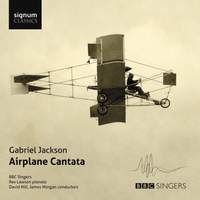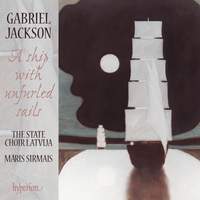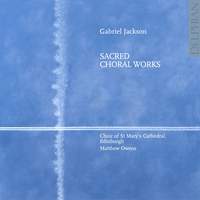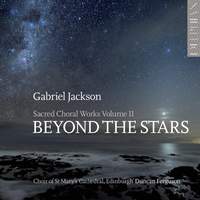Interview,
Gabriel Jackson – Airplane Cantata
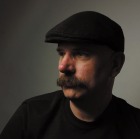 British composer Gabriel Jackson has risen to prominence as a writer of distinctive and instantly accessible music - largely, though not exclusively, sacred choral works that have already entered the repertoire of choirs both in Britain and overseas.
British composer Gabriel Jackson has risen to prominence as a writer of distinctive and instantly accessible music - largely, though not exclusively, sacred choral works that have already entered the repertoire of choirs both in Britain and overseas.
His latest album, Airplane Cantata, is a collection of secular works for choir, dominated by two large-scale works - a cantata on the subject of the first steps in aviation, and a symphony for unaccompanied choir dedicated to the city of London.
David caught up with him to talk about the compositional process behind these, and the other works on the disc.
In the first two items, The Voice of the Bard and Ruchill Linn, not to mention the first movement of the Cantata, the music often seems to focus on one individual word, or even syllable, as a sound in its own right – even when this obscures its meaning or breaks up the larger-scale flow of the sentence. Do you think it’s fair to say that you’re less concerned with using music merely to add a new depth to someone else’s words, and more interested in using their text as the raw material for something completely original that takes it in a new direction?
>No, I think my primary concern is to make a piece of music that is generated by the text. That relationship between words and music can take many different forms, often simultaneously. The structure of the text is important – either its own intrinsic shape, or one I’ve found in it. Specific images may produce an illustrative effect, or they may not. My response to the words may be detailed, or very broad, often in the same piece. The way the text looks on the page can be important. The openings of The voice of the bard and of the Cantata, with their repetitions and elaborate ornamentation, for example, are intended to be declamatory and rhetorical. I’m not necessarily interested in elucidating the text, it’s more about meditating on it, in whatever way seems appropriate at any given point.
In the Airplane Cantata, you accompany the choir with a pianola. You mention in the notes to the album that one reason for this was that the instrument’s lifespan coincided roughly with the era of the first aviators, but were there musical considerations at work as well? The sound of the pianola is inevitably more “machine-like” than that of a conventional piano (not least because of the lack of a sustain pedal) – was this part of the effect you were aiming for?
>The pianola may be like a machine in the hands (and feet) of you or me but it definitely isn’t when Rex Lawson is in charge! Uniquely, he is capable of enormous subtlety of rubato, of touch, colour and dynamic control. Of course the fact that the pianola can throw out torrents of notes at a speed no human could ever manage is very exciting – and which I exploited to the max in the Toccata aeronautica – but it was the possibilities of textural layering that interested me most. The pianola part is often notated on six staves, with up to six strands of material occurring simultaneously. The only deliberately mechanistic moment is the Take-off movement, where the pianola sounds like a gigantic contraption gradually cranking into life and becoming airborne.
Why the narration? At other points in the Cantata (eg the second movement) you use simple, homophonic textures to convey large amounts of prose clearly, effectively and almost matter-of-factly – a little like a brisk Anglican chant – so what was behind the decision to use a speaker for the newsreel extracts?
>It wasn’t that I decided that those particular words should be spoken instead of sung but, rather, that I wanted a kind of old-fashioned newsreader figure to reel off a load of interesting facts about the development of aviation, as a complement to the prophetic sung text at that point, which is by the Victorian George Cayley. All the other texts in the piece already existed – the speaker’s words had to be created for the piece.
The ode to London that you term a Choral Symphony seems to bear a strong resemblance to medium-sized unaccompanied cantatas such as those of Poulenc or Copland; given the forces and structure, what made you decide to give it a title that, to most people, suggests a large-scale orchestral work?
>Does it suggest a large-scale orchestral work? To me it means a symphony for voices. I wanted to write a piece that owed something to the Eastern European and Russian tradition of choral symphonies and concertos – recent examples being works like Galina Grigorjeva’s Svjatki and Pēteris Plakidis’s Nolemtība – in its exploration of different kinds of choral sonority and choral virtuosity. And I wanted it to have the shape of a traditional symphony, with a slow movement and a scherzo and trio. The idea that it should be about London came much later, at the request of the Music Around Festival in Denmark and Sweden, who hosted the first performances.
The tone of the various poems you’ve chosen to comprise the Symphony varies wildly, both in terms of their period (and therefore the language used) and in terms of how positively they view the city – most noticeably in the 21st-century poem My city. Did you find it difficult to mould these wildly divergent visions of London into one coherent piece – or do you think the contradictions ought to be embraced?
>I wanted the texts to range as widely as possible both in period and in their perspective on London, not least because that would facilitate and necessitate the diversity of musical material – from dense counterpoint to simple homophony, from bare monodic textures to a cacophony of competing strands - that I wanted to have in the piece. It was fantastic to be able to include My city as it’s the only really political text (as well as being very witty) and I thought it expressed an important viewpoint. I definitely think the contradictions should be embraced – London is my home and I love everything about it!
Airplane Cantata is out on Monday on Signum Records.
Available Formats: CD, MP3, FLAC
Other recordings of Gabriel Jackson's music
The State Choir Latvija under Maris Sirmais perform some of Jackson's recent sacred works (which themselves owe much to the Latvian and Baltic choral tradition).
Available Formats: CD, MP3, FLAC
Duncan Ferguson conducts on the first of two CDs recording the fruitful results of Jackon's association with the choir of St Mary's, Edinburgh, including nine world premieres.
Available Formats: CD, MP3, FLAC
Ferguson and St Mary's choir return for a second helping of Jackson's music, including the Hymn to St Margaret of Scotland which was written especially for them.
Available Formats: CD, MP3, FLAC, Hi-Res FLAC
Polyphony, under the baton of Stephen Layton, present an enchanting selection of Jackson's choral works - many of them dedicated to, or connected with, St Mary.
Available Formats: CD, MP3, FLAC


